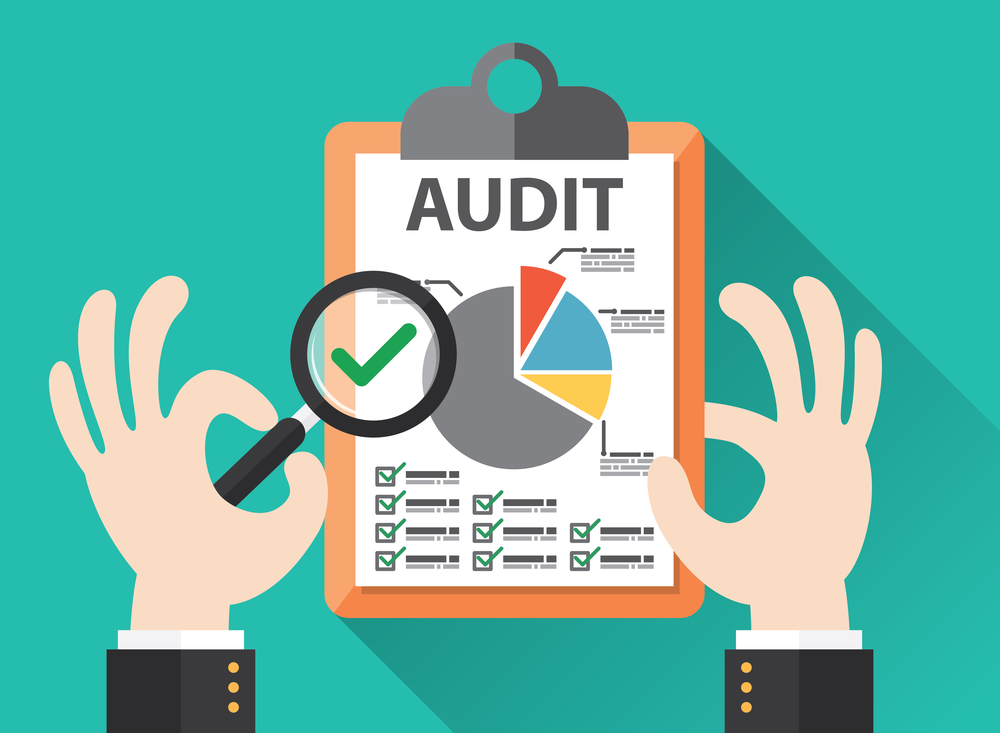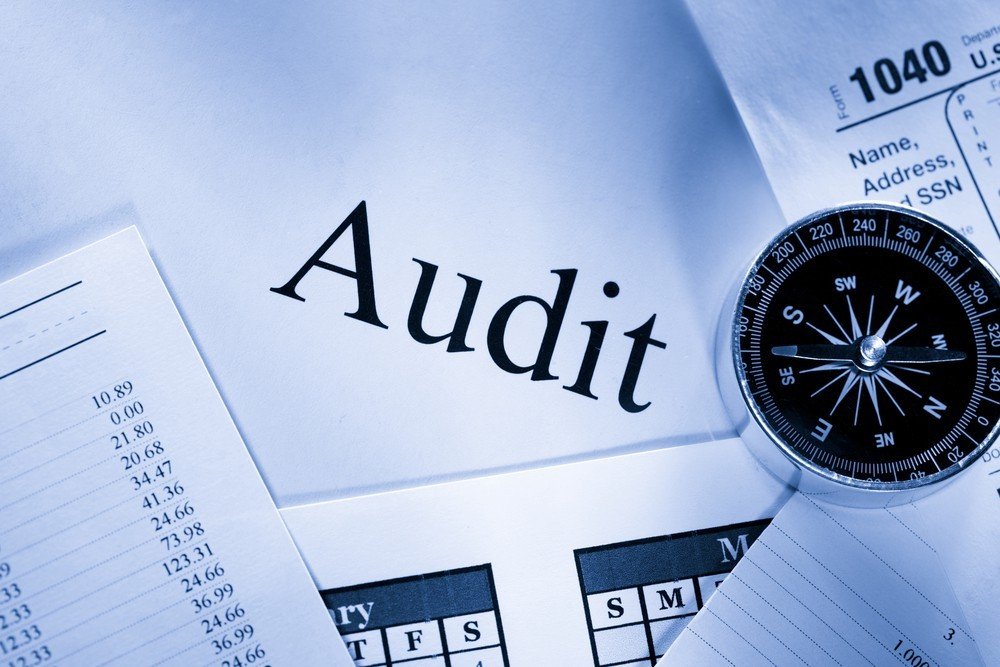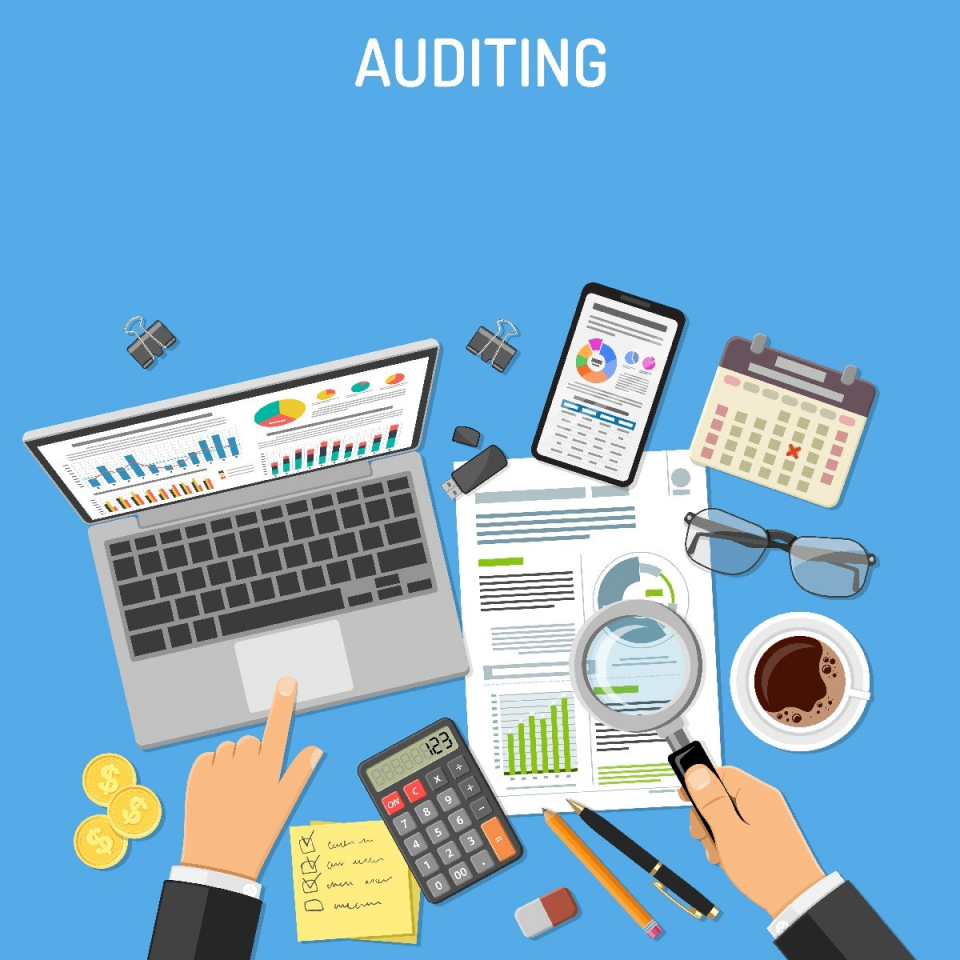Audited Financial Statements
A financial statement that a company has created that has been audited by a certified professional accountant (CPA).
An audited financial statement is a financial statement that a company has created that has been audited by a certified professional accountant (CPA). A CPA reviews it so investors and lenders affirm that the financial statement is accurate to be used in their decision-making.

Auditing is thoroughly examining a company's book of records to verify the information's accuracy and the numbers' legitimacy. The auditing process determines whether the business is accurately following the regulation requirement stated in the GAAS.
The American Institute of Certified Public Accountants (AICPA) created the Generally Accepted Auditing Standards (GAAS), like the Generally Accepted Accounting Principles (GAAP), which are strictly regulated standards and requirements that auditors must follow when auditing a company's financial statements.
Failing to follow the regulations would compromise the legitimacy of the statements. The company and accounting professional can be punished with prison time, financial penalty fees, and other large penalty fees and stripped from accounting privileges if they fail to follow the standards.
To ensure precise and legitimate auditing, The Public Company Accounting Oversight Board (PCAOB), a non-profitable organization, is responsible for regulating and overseeing the audit regulations of the publicly traded organization.
Type of Financial Statements that Auditors will Audit
When an Auditor audits a company's financial records, there are 3 main documents that they will look at and assess.

These 3 Financial Statements are crucial, so you must ensure that they are accurate and up to standards.
The Balance sheet is a financial document that displays the company's Financial Assets, Liabilities, and Owner's Equity at a specific time.
The Balance Sheet is the component of a financial statement that lists the assets and liabilities of a company at a particular point in time. One of the three primary financial statements—the other two being the income statement and cash flow statement—is used to assess a company's performance.
The financial document displays the Revenue, Expense, and Profit over a while.

An income statement is a financial statement that details the company's earnings and outlays. It also shows a company's profit or loss over a certain period.
You may better comprehend your company's financial situation by comparing the income statement to the balance sheet, cash flow statement, and cash flow forecast.
The income statement may also be referred to as a statement of operations, a statement of financial result or income, or an earnings statement.
3. Cash Flow Statement
The Cash Flow Statement displays the cash activities and transactions that the company has. Therefore, the transaction would be on the Cash Flow Statement for every transaction that revolves around cash, whether the company receives or gives.

The cash flow statement lets you keep track of incoming and departing cash by displaying the source of that money. An organization's operational, investment, and financial operations all generate cash flow.
The statement also provides information on investments, business-related expenses, and cash withdrawals at a specific time. The knowledge you obtain from the cash flow statement helps managers make wise decisions for managing business operations.
Publicly traded companies and private companies
Other than the obvious differences between publicly traded and private companies, they also have more disparity. For example, the revenue generation or the company's size is not the main difference between the two, but rather the way they raise capital.
Public Companies are companies and corporations that have the function to invest and step foot into the investment market. Public companies can buy or sell stocks or bonds to increase their capital which would create an advantage over privatized companies.
Being public would also come with many regulations and strict oversight by the government and boards. For example, to maintain public companies in place, they're required by the Sarbanes-Oxley Act to audit their reports yearly to not only provide assurance to investors but to detect any foul play or fraud from them.

Private Companies are the opposite of public companies as they are not publicly traded in the stock market. This means they cannot raise capital by offering shares to the public. They have to ask the bank or private investors for money.
Just because private companies are not required by law to audit their accounting records doesn't mean they don't. Private companies still have the option to audit their accounting records internally to assure investors or lenders that their records are valid to review and use.
Not all private companies are small in any way. The common misunderstanding that private companies are private because they can't handle being public is false. The major reason why companies stay private is that they won't be subjected to more laws.
The Securities and Exchange Commission (SEC) has many rules and requirements that companies must follow, and if not followed would cost companies a large fee. Examples of Large Private companies would be
- Cargill - A food corporation from the united states that generated $114 billion US in 2018
- Koch Industries - A multinational conglomerate corporation with a revenue of 115 billion US in 2020
- Albertsons - An American grocery company with a $62.6 billion US revenue in 2020.
- Mars - A multinational pet food, food products, and animal services company with a $40 Billion US revenue in 2020.
Types of Auditing
Auditing is defined as an on-site verification activity such as an inspection or examination to ensure that a process or quality system is operating following specifications.

A specific function, procedure, or step in the production process may be the focus of an audit rather than the entire organization.
In the auditing world, there are many types of auditing, but the main 3 types of auditing that are used constantly are the following:
1. External Audit
External auditors are certified professional accountants who inspect and perform audits for clients' accounting records, like financial statements, to determine if they are accurate and follow the accounting standards set by the board.
Public firms hire external auditors as they are required by law to audit their financial statements to ensure their financial statements and accounting records are up to standards.
2. Internal Audit
Internal Auditors are certified professional accountants to analyze a company's financial records to determine, monitor, and evaluate the efficiency of business activities. The accountants usually do internal Audits in the firm that is certified professional accountants.
3. Internal Revenue Service (IRS) Audit
IRS Auditors are certified professional accountants that examine an organization's or individual's financial information to ensure information is reported as legitimate and that they are following the tax laws. IRS Audits are mainly done towards high earners, mostly individuals earning more than $500K a year.
The Big 4
External auditors must perform Audited Financial Statements; therefore, public-traded companies, who are required by the Sarbanes-Oxley Act to audit their financial records, would hire third-party CPA firms to audit their financial statements.

The listed firms are the 4 most prestigious CPA firms in the world, better known as the Big 4, with high-profile clients from across the globe.
1. Deloitte
Deloitte is the most prestigious multinational professional services network with over 150 offices. It provides auditing, assurance, consulting, financial advisory, risk advisory, tax, and related financial services, with a global revenue of $50.2 billion as of 2021.
Deloitte Biggest Clients:
2. PwC
With a revenue of $45.14 billion, Price Waterhouse Cooper is the world's second most prestigious multinational professional service. It provides Accounting Advisory Services, Audit, Assurance, Consulting, Current Insolvency Assignments, and Forensic Services.
PwC's Biggest Clients in 2016 were:
- Bank of America - $75.7 Million in audit fees
- JP Morgan Chase - $64 Million in audit fees
- Goldman Sach - $53.2 Million in audit fees
- Disney
3. Ernst & Young
The third largest accounting firm in the world, with a global revenue of $40 Billion USD. Founded in 1989, Ernst & Young has been operating for 23 years, providing audit and assurance, consulting, law, strategy, tax, and transaction services.
Ernst & Young's Biggest Clients in 2016 were:
- Walmart - $21.8 Million in audit fees
- Amazon - $12.9 Million in audit fees
- Facebook - $12 Million in audit fees
- Apple - $10.6 Million in audit fees
4. KPMG
A British-Dutch multinational professional services firm that holds the 4th spot of the Big 4 accounting organization with a global revenue of $32.13 billion USD in 2021. KPMG offers management consulting and risks consulting, including cyber security services and Deal Advisory services.
KPMG Biggest Clients:
- Accenture - $22.8 Million in audit fees, etc., in 2016
- Halliburton
- Citigroup - $99 Million just so KPMG to become their auditor
- General Electric - $89 Million in audit fees, etc., in 2016
Other Big CPA Firms

1. BDO
Founded in 1964 by Hans-Heinrich Otte, BDO has since become the 5th largest CPA with a global revenue of $10.3 billion. They offer management solutions and outsourcing services that effectively manage an evolving business.
2. RSM
Founded in 1926, RSM is the 6th largest accounting firm in the world, with a revenue of $6.3 billion. RSM provides auditing and assurance and related financial services mainly to the middle market in the US and Canada.
3. Grant Thornton
Grant Thornton is the 7th largest accounting firm in the world, with a revenue of $6.6 billion. With approximately 62,000 employees, Grant Thornton provides independent accounting, auditing, assurance, and other related financial services.
Auditing process
The Auditing Process is a set of steps an auditor must take to complete an audit engagement with a client, known as the audit process. The nature of the audit engagement will determine the steps that must be taken.

To prepare for the auditing of your financial statements and business, there are multiple steps that you must take beforehand:
- Document Preparation
- Find an External Auditor
- Appointed Auditor
- Providing Evidence
- Audit Report
1. Document Preparation
To prepare for auditing, you first must collect and organize every accounting record and give it a quick review. Have all the transaction receipts, financial statements, and related financial records, as the auditor needs them to conduct their report.
2. Find External Auditor
To audit a financial statement, a company must find an external/independent Certified Professional Accountant from a CPA firm to audit and examine the company's accounting records. For example, major Companies like Microsoft or Amazon would be in contract with Big 4 CPA firms like Deloitte and PwC.
3. Appointed Auditor
Once you've appointed an auditor, the auditor will request meetings and interviews with certain departments and individuals regarding their documents and verification. The auditor would also go through the financial statement created by the company's accountant and review the accounting records.
4. Providing evidence
When the auditor conducts their examination, they will request evidence and receipt of each transaction to determine the accuracy and legitimacy.
5. Audit Report
At the end of the audit, the auditor will distribute the final audit report to the CEO, CFO, President, and important high-management workers to get signed. Afterward, in about a year, the report will be sent to be processed, and the auditor would usually give their opinion on the financial statements.
Audited Financial Statement Layout
In an Audit Financial Statement document, there is a layout that is followed when preparing the document. Besides the 3 audited financial statements in the document, multiple components are part of the document that is either calculation or report based.

The components are in the following order:
- Title of report
- Management Report
- Auditor Report and signature
- Financial Statements
- Notes regarding the financial statements
- Account examinations
Before any calculations are shown in the document, the external auditor would write a report stating and proving how the company is following the accounting standards of the Accounting Standard Board (AcSB). Among the documents, the auditor would provide the exact instructions on how the audit was performed.
After the audited financial statement, the auditor would have notes explaining how each statement was prepared and any necessary explanatory material. Besides the 3 main financial statements, the auditor would also examine each of the accounts for the year and the previous year.

The auditor would create a small chart examining account balance activities for the fiscal year and past year. Showing the increase or decrease of the value of said account would provide insight into whether or not the state of the business is rapidly increasing or decreasing.
At the end of the audit report, the external auditor, hired by the publicly traded company, would send the report to the Securities and Exchange Commission (SEC) to further improve the validity of the audited financial statement.
Conclusion
An Audited Financial statement is an important document for publicly traded companies as they assure investors and lenders that the financial statements they see are accurate and legitimate.

However, to create an audited financial statement, there are many steps and regulations that a publicly traded company must follow to audit its financial statements and accounting records. First, an external auditor must be hired and provide the necessary information and evidence to complete the task.
The audited financial statement will be made correctly with an external auditor, and the Securities and Exchange Commission will accept it.
You can enroll in the Accounting Foundation course below to learn about Audited Financial Statements, Public and Private Companies, or even the 3 financial statements and models.
Researched and Authored by Edward Q.
Free Resources
To continue learning and advancing your career, check out these additional helpful WSO resources:




or Want to Sign up with your social account?